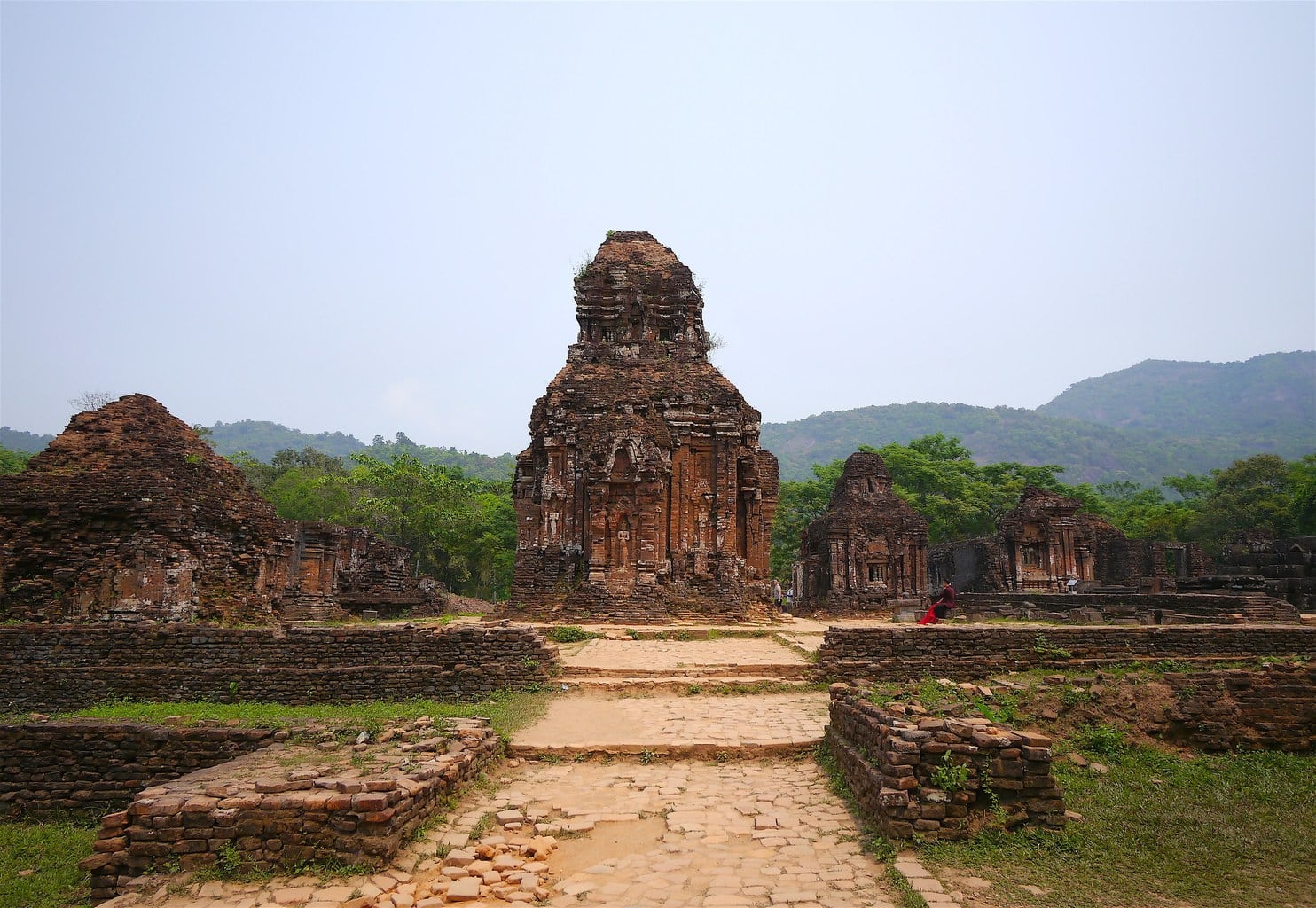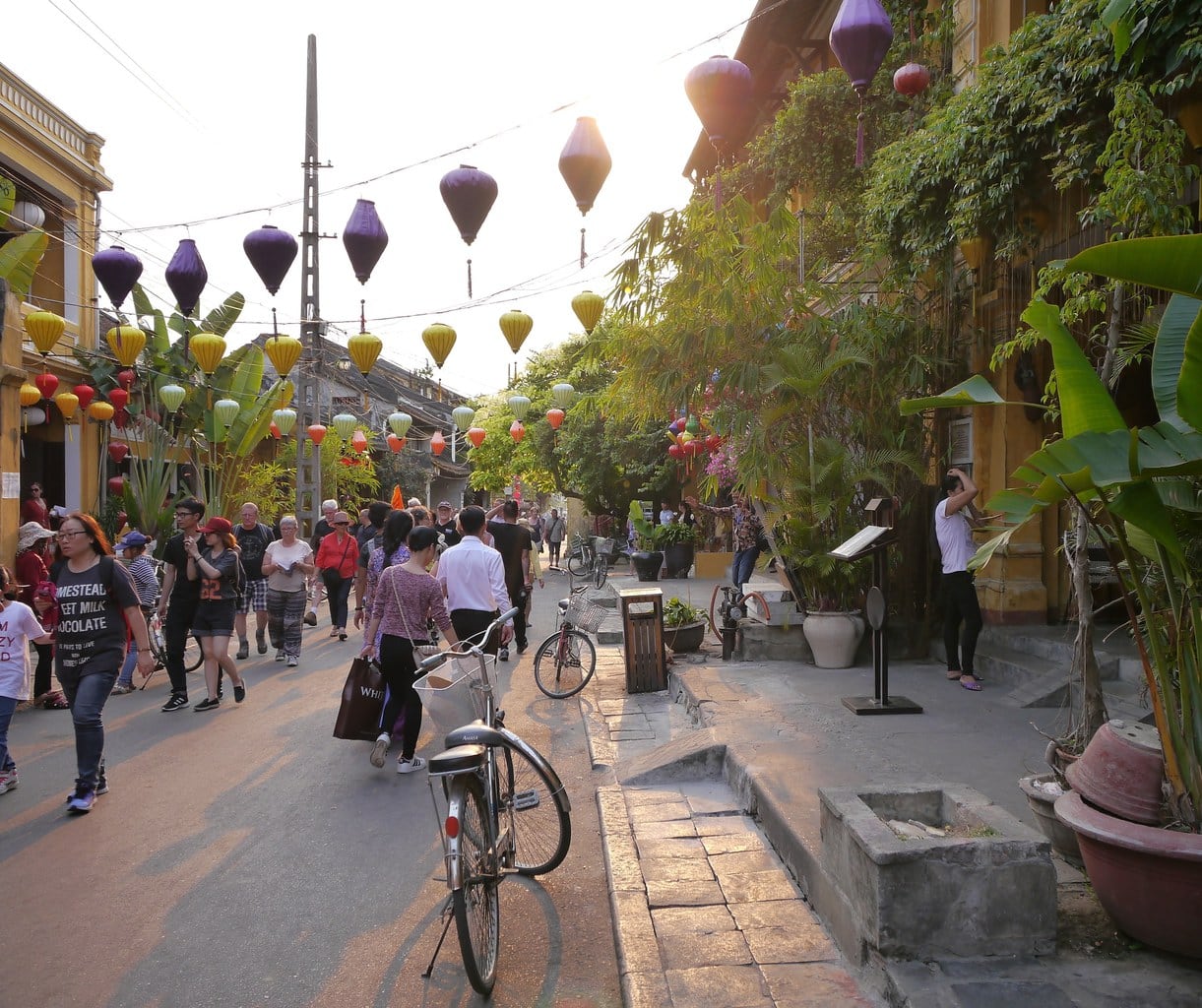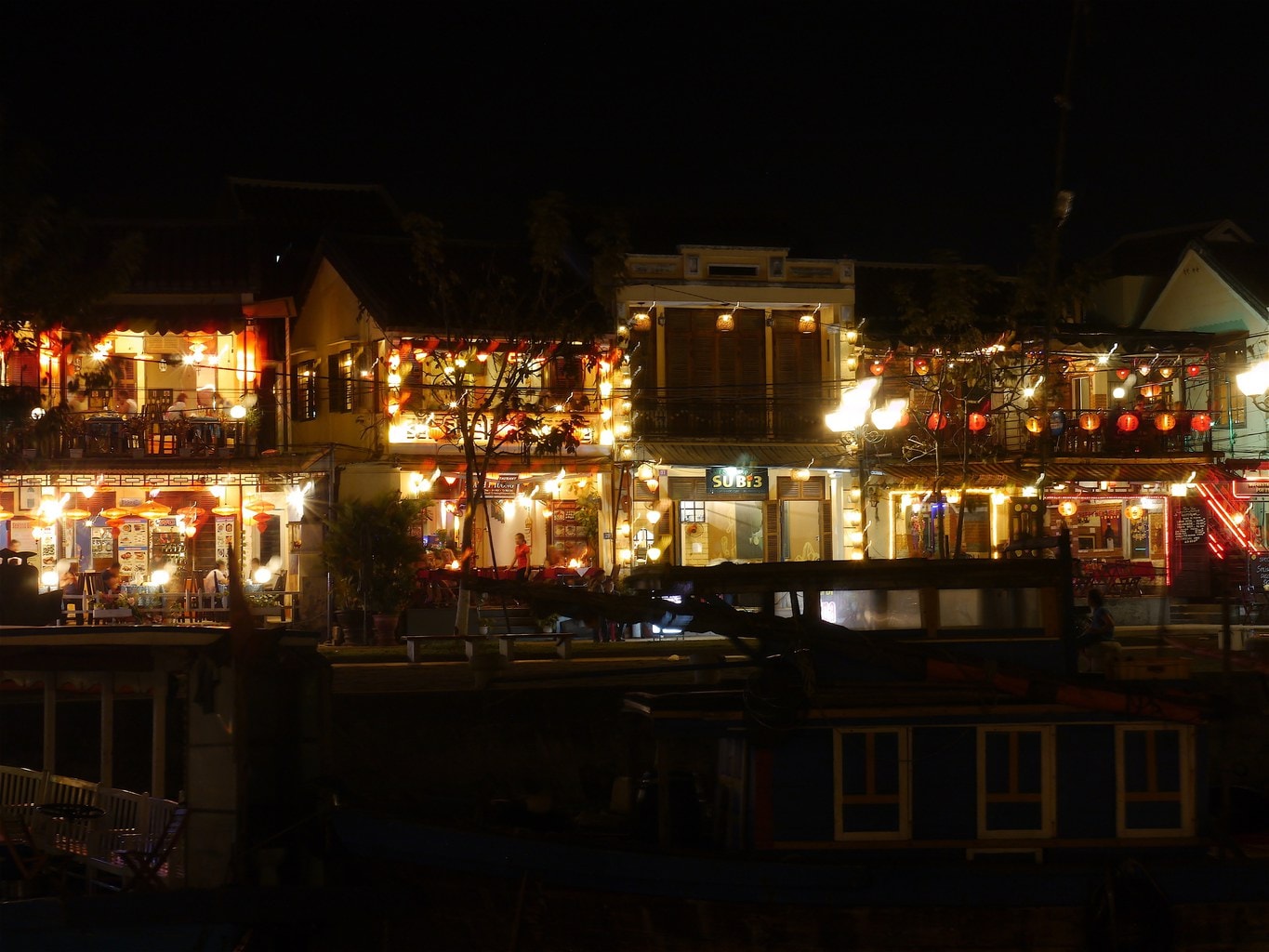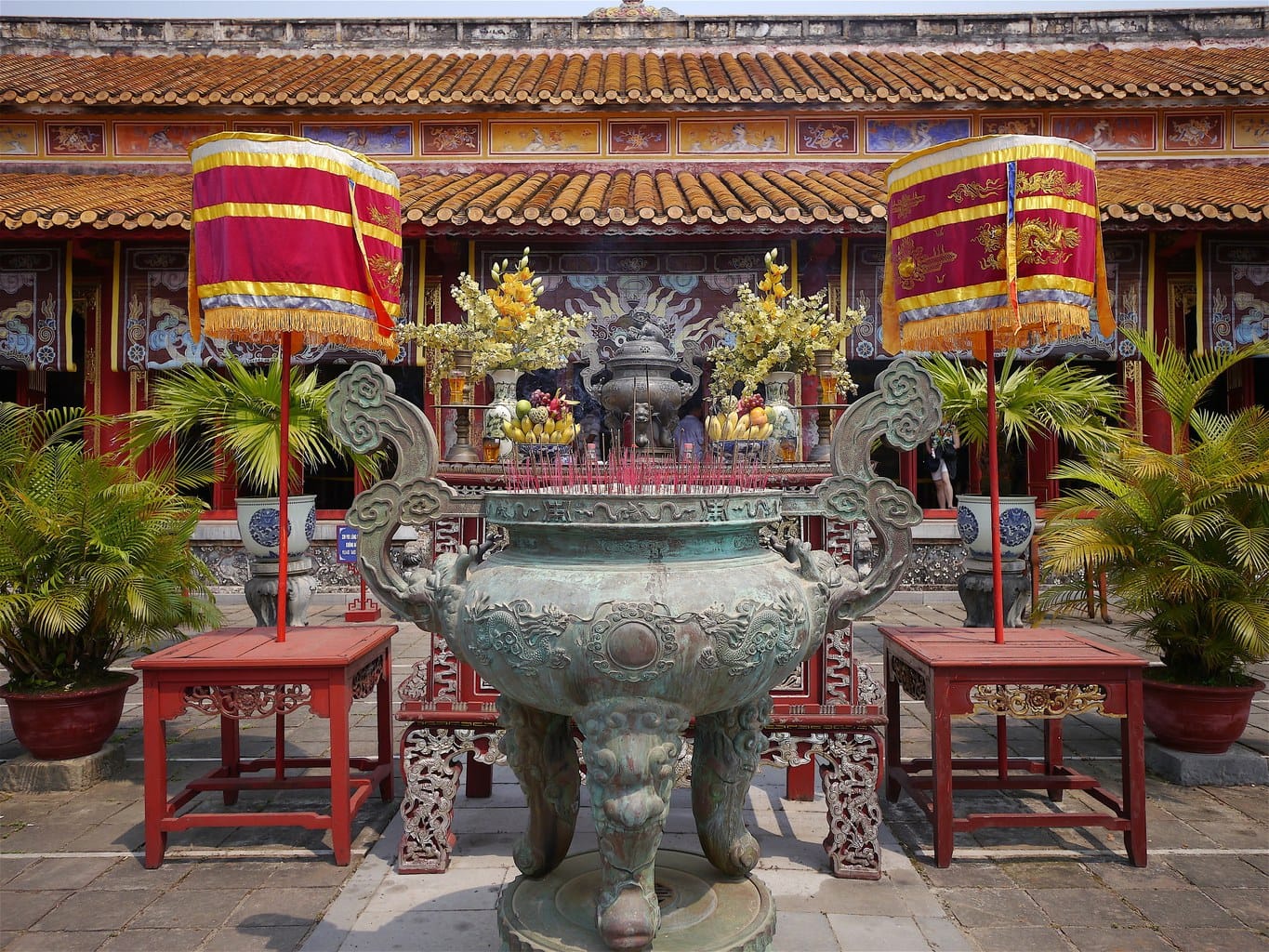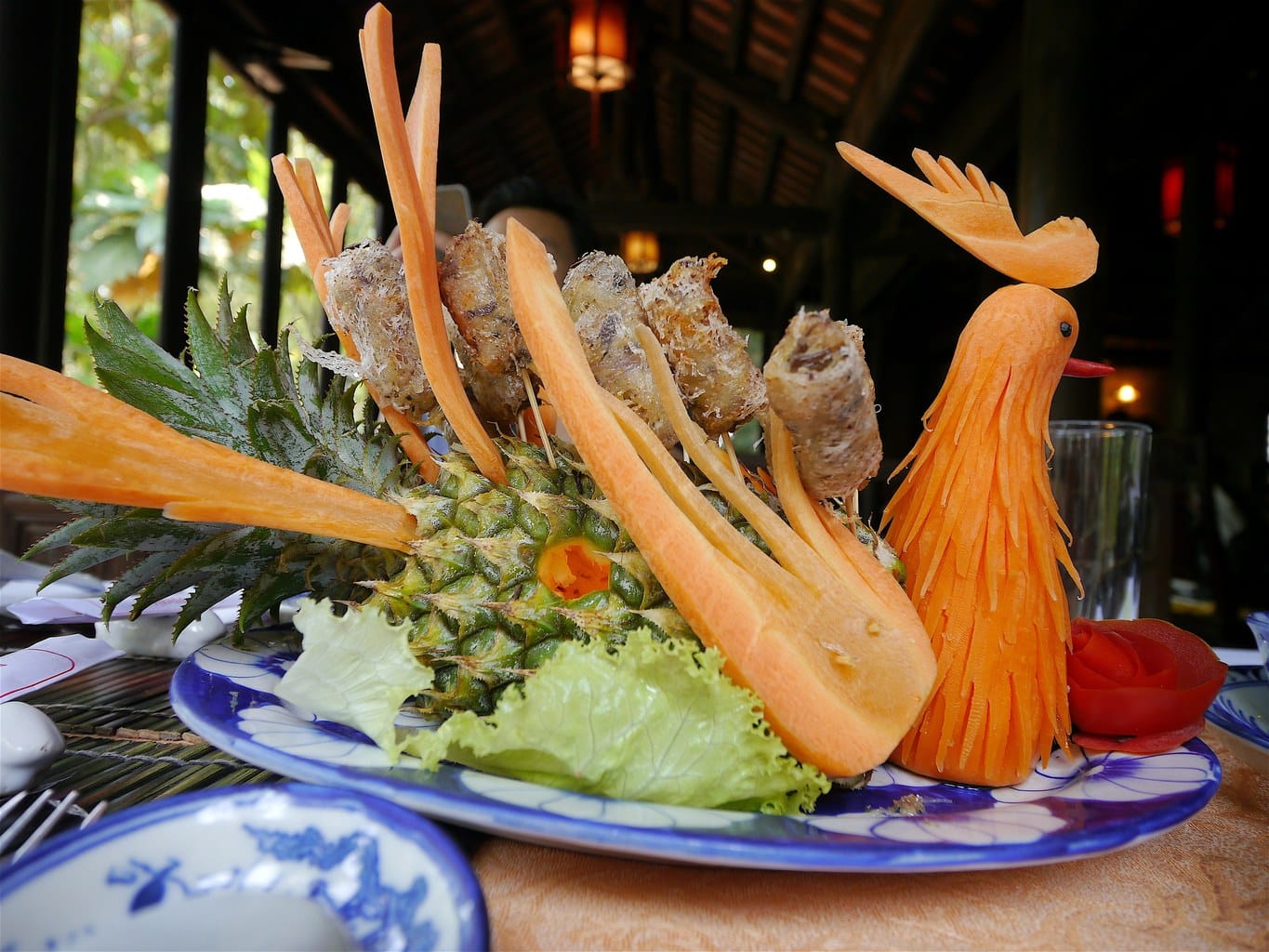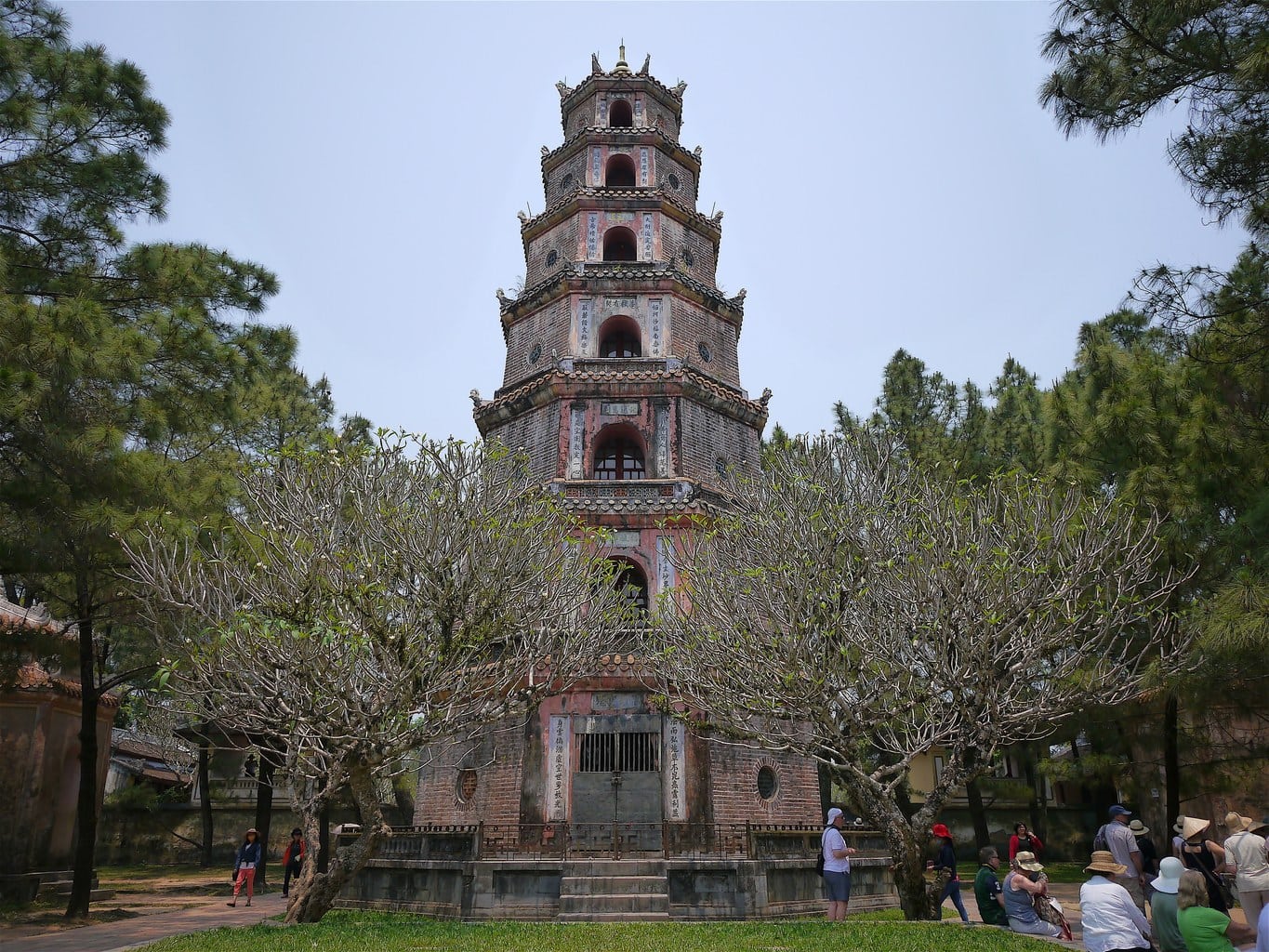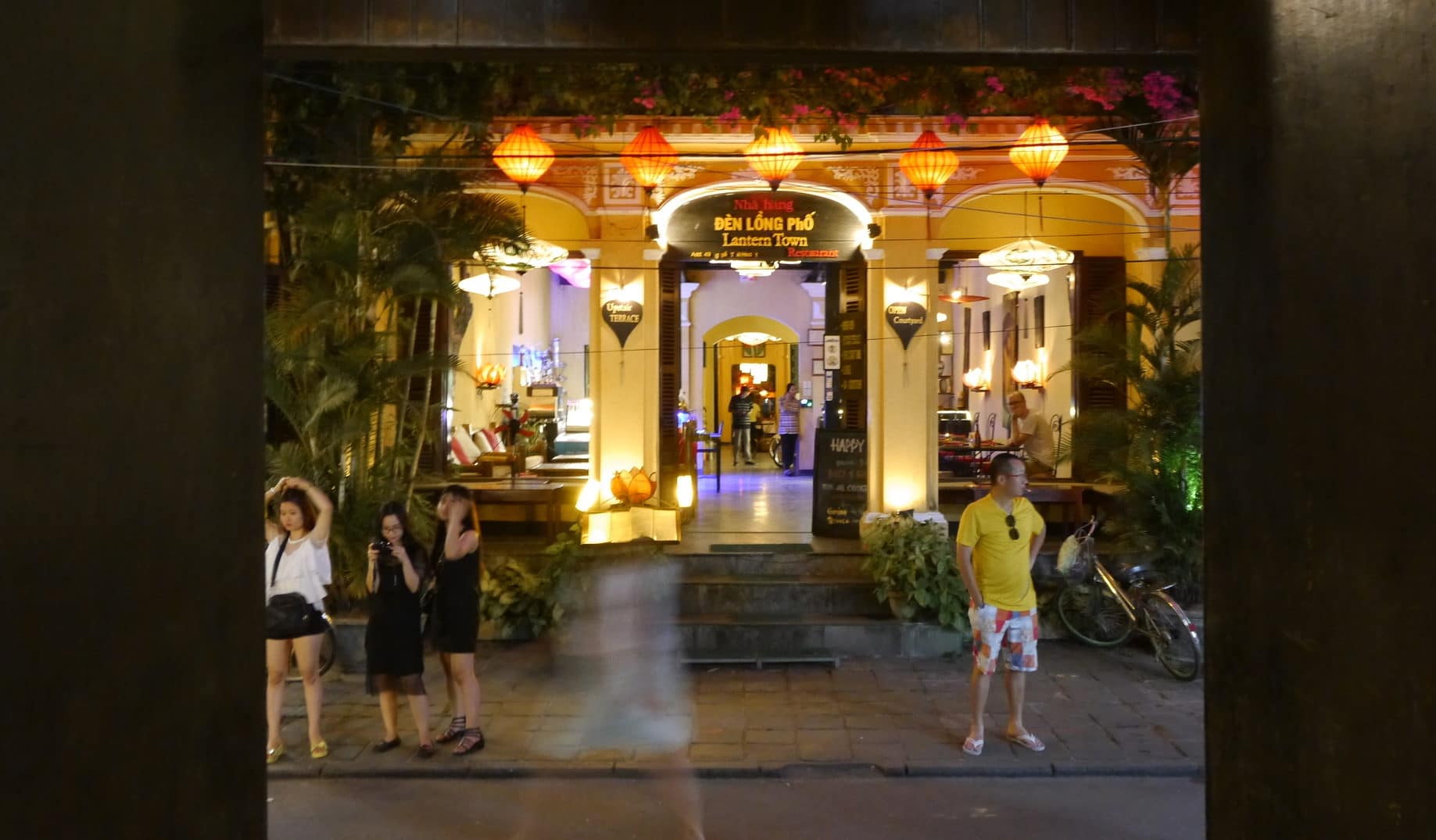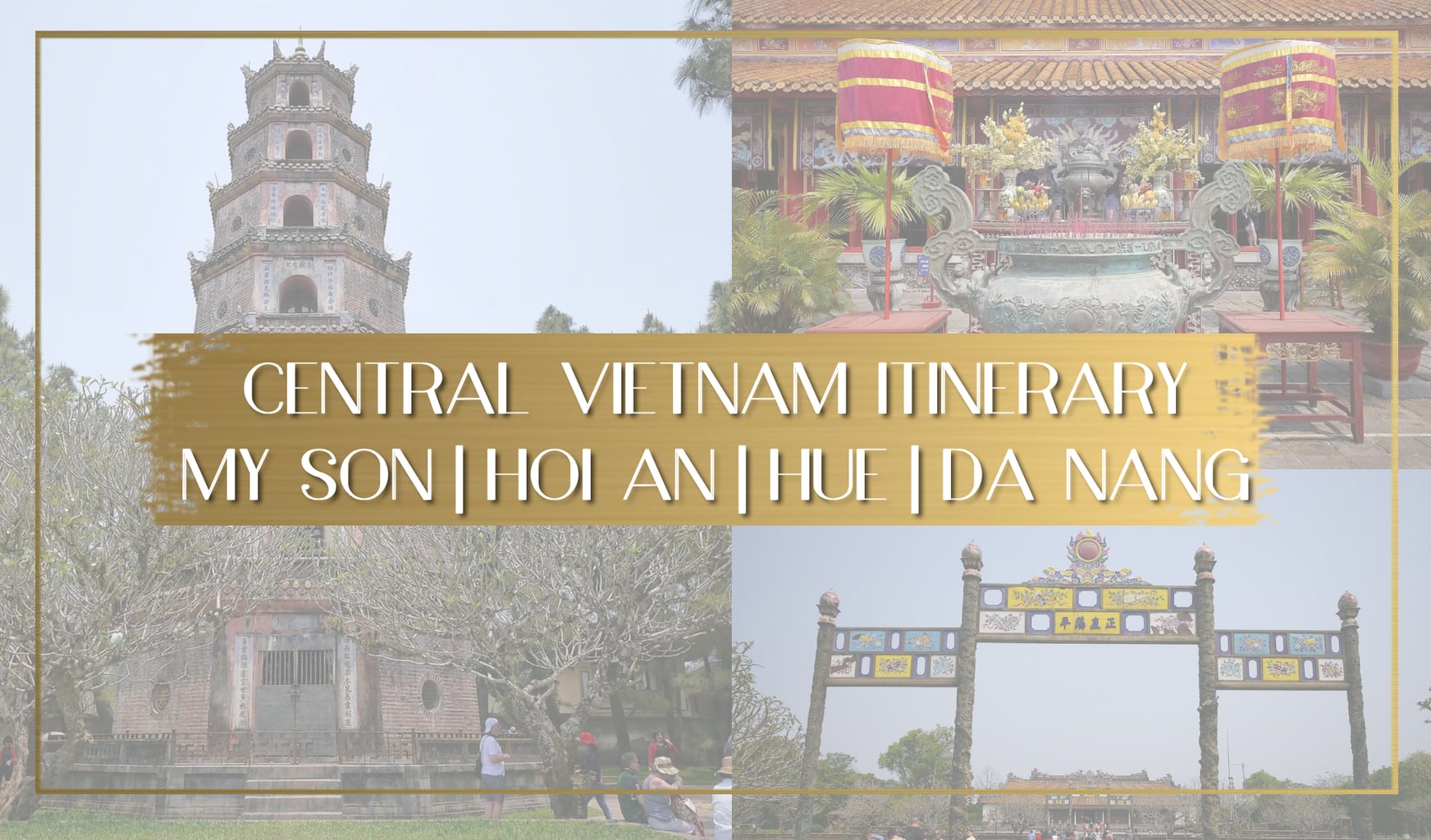
The Central part of Vietnam, between Hanoi in the north and Ho Chi Minh in the south, is extremely rich in heritage and history, including four UNESCO World Heritage Sites. Historically known as the Cultural capital of Vietnam, Hue was an important center of political influence during the Champa Empire.
Hoi An, located one hour and a half south of Hue, remained the most important trading center until the 18th century when its relevance declined. Centuries before, My Son was the burial and religious center of the region. The area’s rich past provides a dose of history to the modern and beach-like atmosphere of Da Nang and ample opportunities to fill a trip.
Today, the largest and most popular city in Central Vietnam is Da Nang. The focus of high end luxury resorts and large stretches of beach, Da Nang has become the modern center of development enjoying international air connections to countries in Asia and the Far East.
Visiting Central Vietnam gives you the opportunity to combine past and present, from the ruins of ancient temples in My Son to the modern and glitzy shopping malls and beach resorts of Da Nang. Almost every bit of Vietnam’s past is reflected in the area between Hue in the north, My Son in the south and Hoi An in the East.
As distances are large, you will need either a car or a driver to get from one place to the next. Although most people base themselves in Da Nang, there are several others resorts in the area that are well positioned and offer more, like the Banyan Tree Lang Co I stayed at. So get ready for an experience like never before with this 4 day My Son, Hoi An, Hue and Da Nang itinerary.
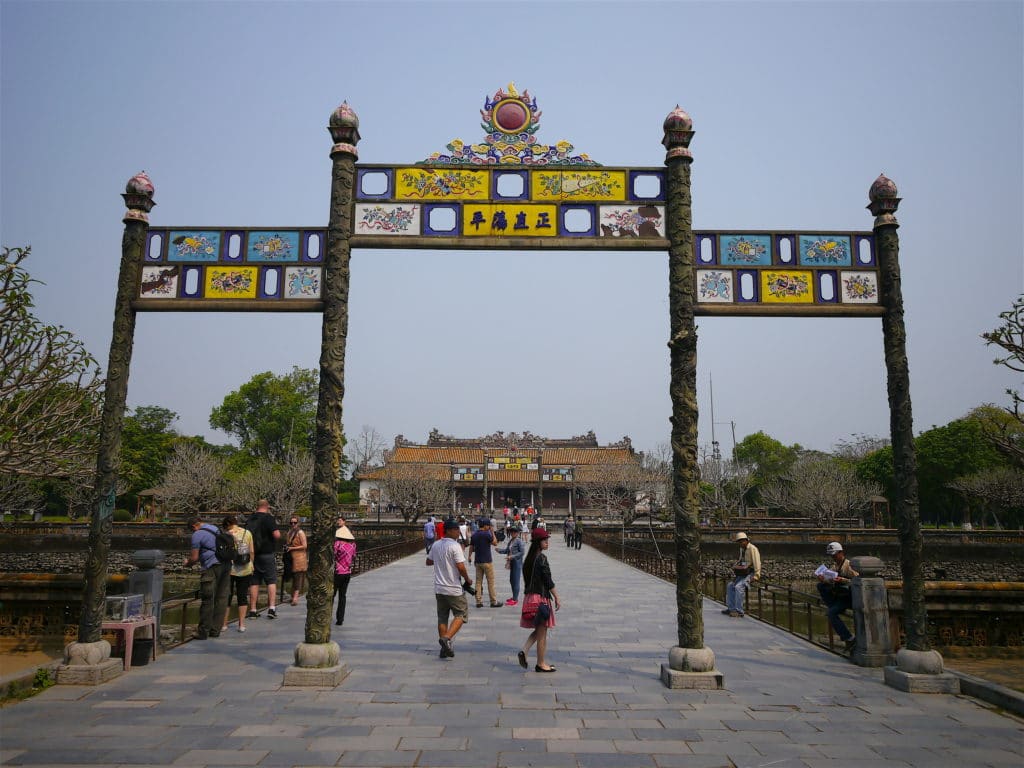
I’ve written about each of these destinations separately, so if you’d like to delve deeper, you can click on one of the links below:
- THE ANCIENT UNESCO-LISTED TEMPLES OF MY SON. A visit to the ancient UNESCO World Heritage listed civilisation sites and temples of My Son, in Central Vietnam.
- GUIDE TO HUE, THE IMPERIAL CITY OF VIETNAM. Guide to Hue, the Imperial City of Vietnam including what to see, what to do, places to visit and where to eat.
- A DAY EXPLORING HOI AN’S TANTALISING MAGIC. Spending a day in Hoi An visiting ancient heritage houses, lantern filled streets and the Japanese Bridge.
Now let’s get to our 4 day itinerary of Central Vietnam!
Day 1: My Son and Hoi An
You could spend a whole day in Hoi An but the truth is that the UNESCO listed town is best experienced in the evening when the lanterns are switched on and the magic of the river, the candles released on the water and the general feel of romance pervades. Also, it can get really hot during the day so it is best to arrive for a late lunch from My Son.
Start the day early, and head to My Son from your hotel. The visit may take around 1-2 hours maximum to take it all in. If you are staying in Hoi An, you may want to visit My Son very early in the morning before the tour buses arrive and before the heat cooks you alive, then retire to your hotel in the hotter hours of the day and go out to explore Hoi An after 4pm when the sun is already winding down and the light takes on an orange muted feel. The town glows in the golden evening sun rays.
In Hoi An, have lunch at Seedlings, a socially committed restaurant managed by Banyan Tree Lang Co and that serves as the training platform for the youth in Hoi An to learn skills in the hospitality and cooking world. It is on the other side of the river from the old town but very easily found right in front of the main river.
For dinner, famously acclaimed and always packed Morning Glory is owned and ran by the cooking institution in Hoi An, Miss Vy. She even has a YouTube channel.
Ms Vy’s also runs a cooking school with courses that start at the market and are well known. This is a recommendation that will only disappoint in the waiting time. Make sure to book (even then you will have to wait for a few minutes). Food here is served with a side of hospitality and grandma recipes.
If you have time and would like to know more about the Old Houses, you can arrive in Hoi An earlier and tour the few buildings that are open to the public as part of the Hoi An ticket. This also gives you access to the famous Japanese Bridge. Stay until late. Hoi An is truly beautiful when it get dark and you can only see the candles lit, the street food vendors and the lanterns.
Day 2: Hue
The Imperial City has a large citadel that can take up to three hours to explore with a guide. Looking much like Beijing’s Forbidden City, the Citadel was not accessible to anyone other than the Royal Family and the concubines.
As the Vietnamese Royal family dismantled, the construction was left to its own demise by the Communist Government but has recently been refurbished. A large part of it was destroyed during the Vietnam War when American troops dropped blanket bombs onto the city but much of it can still be seen.
Expect Chinese style buildings and pagodas in signature red and ochre. Very beautiful and peaceful despite its rough past. Get a guide to make the most of the visit r you will just miss the best part.
After the citadel head to the tall Thiên Mụ Pagoda that is the symbol of the city. This seven storey pagoda’s origin is wrapped in legend. Built in 1601 it remains a Buddhist center. Rub the marble turtle’s head for longevity and marvel at the 3,285 kg cast iron bell said to be audible from 10km away.
The pagoda was the center of most of Buddhist complaints and demonstrations against the Diem government in the 1960s when the majority Catholic government became more and more oppressive and discriminating of Buddhism.
It also houses the Austin car in which Buddhist monk Thich Quang Duc was driven to his self-immolation in Ho Chi Minh in 1963 against the Diem regime and which made the situation visible to the international media.
Have lunch at Y Thao Garden restaurant, a fine example of Hue’s garden houses. This is also a cooking school and the entire place is a treasure trove of antiques and old pieces of furniture. The wooden buildings where lunch is served are beautifully old and provide a feeling of ancient royalty.
The garden is pretty, with a small pond and koi fish. Lunch is usually a pre-set menu with royal Vietnamese offers. We had a hand crafted peacock made of carrots, quite an incredible work. Food was good and local.
In the afternoon, if you still feel like exploring more, you can head to Tu Cung Residence where the mother of the last king of the Nguyen Dynasty resided until her death after the Communists took over. It provides a real insight into the last days of the Nguyen including photographs, furniture and personal effects.
After the house, head to Khai Dinh’s Tomb, up on a hill outside of Hue. This is the tomb for the last emperor of Vietnam. He was crowned on 1913 and started building his tomb in 1920 to be one of the most expensive in the Nguyen Dynasty.
He was considered a puppet of the French Government and had to increase taxes significantly to finance the tomb, which made him very unpopular. The tomb was completed by his successor, Bao Dai, in 1931. The place is rather odd, particularly because of the 12 stone statues representing bodyguards at the entrance. Expect dragon sculptures and intricate decorations inspired by the French architecture of the time.
Outside of town as well is the most impressive of the mausoleums, Tu Duc’s Tomb. Built in 1867, its construction almost caused a coup due to the use of forced labour and its great cost. The area was used by the Emperor during his life as well. He would come here to hunt or spend time with his wives and concubines. He has over 100 wives and many other concubines. His remains were not buried here. Where they are remains a mystery.
You can end the day at La Residence Hotel for drinks by the river surrounded by a gone-by colonial feel.
Day 3: Relax and enjoy the beach
If you are staying in Da Nang this is a good day to explore the city and relax. After two days of ruins and an information overload, today you are best off taking it easy.
After lunch and relaxing in your own hotel’s pool or beach, and enjoying a massage, head to the Marble Mountains. Not too far from Da Nang, and sticking to your Da Nang itinerary, these mountains are made of four outcrops that have temples and caves inside atop a few stairs.
You can buy a map at the entrance and make your own way, away from the crowds and into the smaller caves. And if you don’t like stairs, you can also rappel down with Path Tire. After 5pm the entrance is free and you can watch the sunset but there is no lighting so bring a torch.
If you did not feel like relaxing in the morning, you could have also signed up for a cooking lesson at Hoi An’s famous Ms Vy’s Cooking School. Hotels like Banyan tree Lang Co do also offer cooking lessons in the comfort of your resort, though you may miss out on the authenticity of a messy and real kitchen.
Day 4: Hai Van Pass
Your last day of the Da Nang itinerary, assuming you can still make the most of the morning, can be filled with a trip to Hai Van Pass. You can go there by bike, by scooter or simply by car. The views are scenic and beautiful from up there and you can observe all the way from the beach to the mountains. It is a good way to end the trip with the lasting memory of a great landscape.
How to get around Central Vietnam
Bookaway is a fantastic and trusted travel booking platform where you can search for transportation between multiple destinations. We have sourced some routes to, from and around Central Vietnam that you can book online before you go. Select the route you would like to travel by clicking on the link or just visit their homepage and see if there is a specific option for you.
- Hoi An <-> Hue
- Hoi An <-> Da Nang
- Da Nang <-> Hue
- Ho Chi Minh <-> Da Nang
- Ho Chi Minh <-> Hue
- Ho Chi Minh <-> Hoi An
- Hanoi <-> Da Nang
- Hanoi <-> Hue
- Hanoi <-> Hoi An
Where to stay in the area
This My Son, Hoi An, Hue and Da Nang itinerary is a very spread out, covering a wide area and will require you to drive around, there are a few luxury hotels with top facilities and fabulous service.
I stayed at the Banyan Tree Lang Co which is by the sea on its own private beach and has free shuttle service to Hoi An and Hue and can organise tours of the other sights. It was a fantastic and very luxuriously appointed resort with hill top villas and infinity pools with views over the beach and the ocean.
If you prefer to stay in Hue, La Residence Hue Hotel & Spa would be your best bet. Hoi An is a tiny town so the only great alternative there is the Anantara Hoi An which is within the ancient city. There is nowhere to stay in My Son but Danang is filled with top properties including the Intercontinental Sun Peninsula Danang, with gorgeous views from the hilltop, Michelin awarded chef and an isolated peaceful location.
Compare prices, view photos and check reviews for hotels that fit all budgets by clicking on the links below:
Here are some more luxe choices for your stay in Central Vietnam
Banyan Tree Lang Co
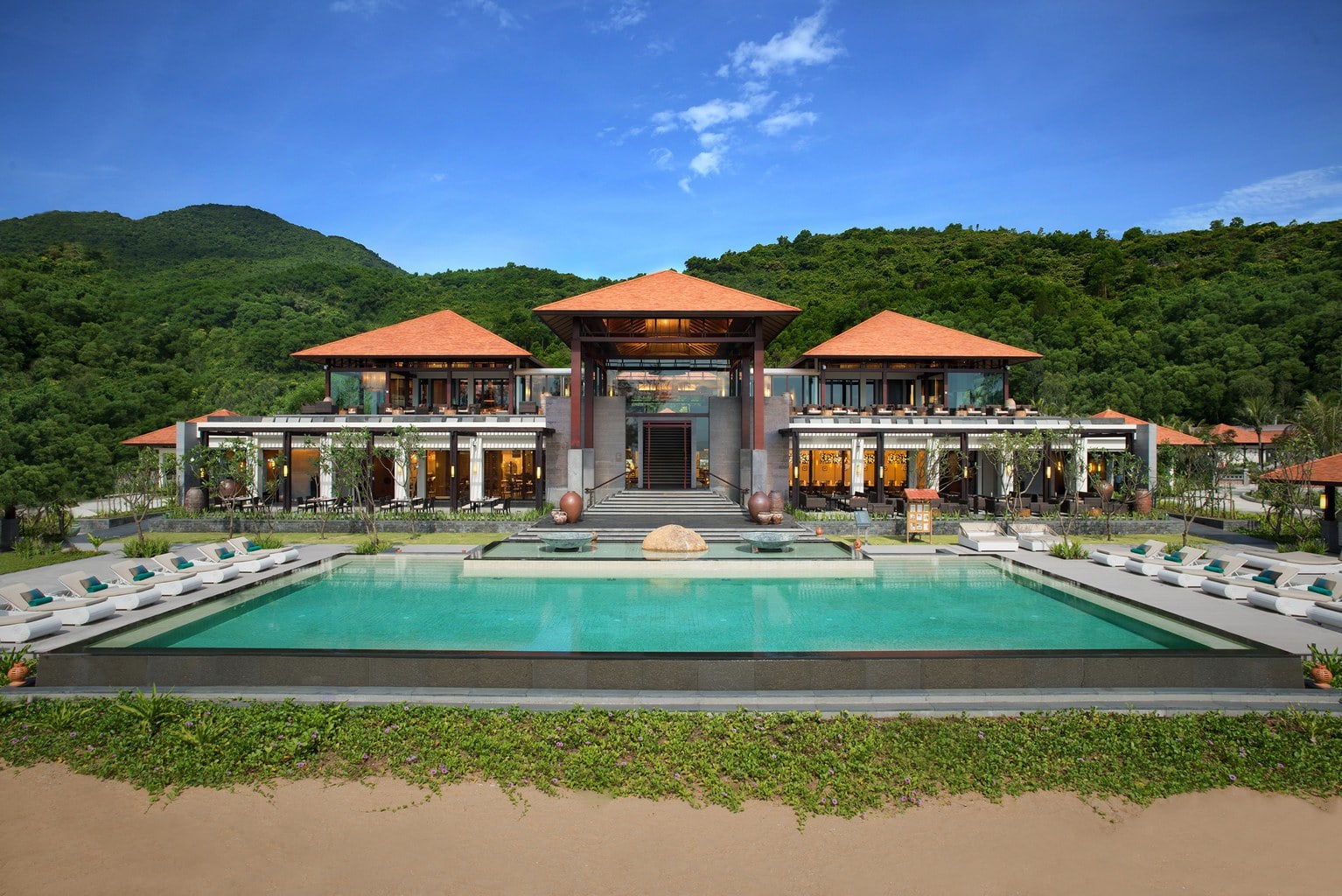
Trusted and honest review of luxury pool villa beach resort Banyan Tree Lang Co in Central Vietnam, between Hue and Hoi An. Read my review of the the mystic world of Banyan Tree Lang Co.
More luxe hotels in Da Nang, Hoi An, Hue
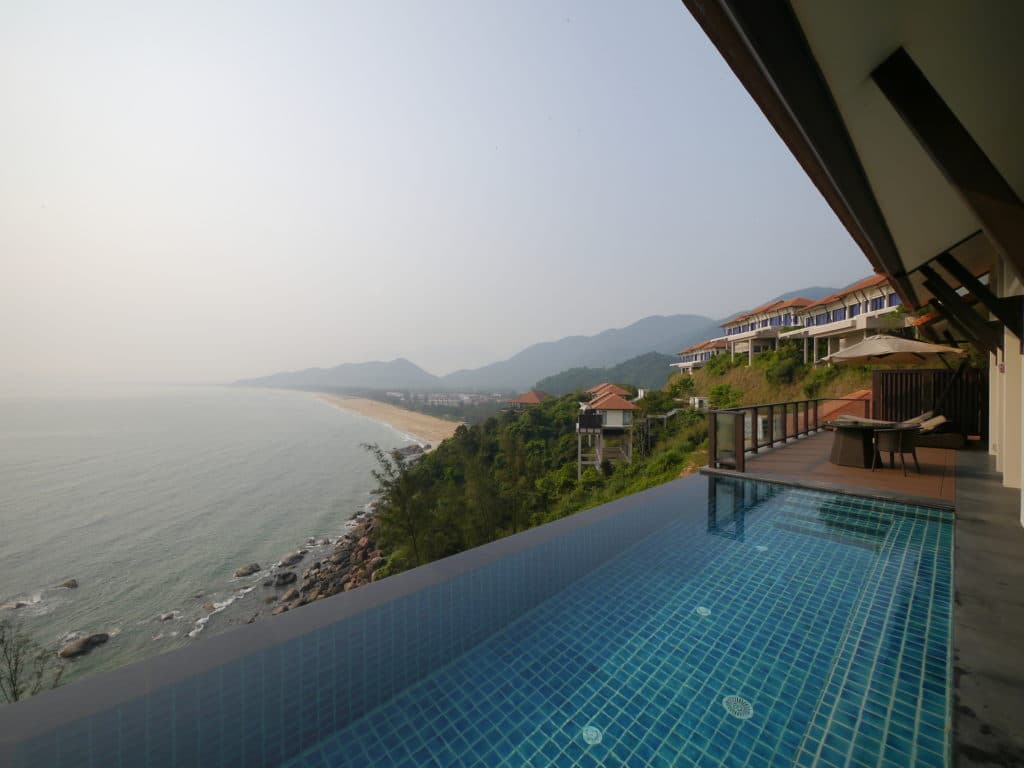
Tried and tested best luxury hotels in Da Nang, Hoi An, Hue and beyond in the beautifully luscious Central Vietnam region.
- Check if you need a visa, get help processing it at iVisa.
- Never ever leave without travel insurance. Get affordable coverage from World Nomads or long term insurance from Safety Wing.
- I find all of my flights on KAYAK. Check their Deals section too.
- Search for all your transportation between destinations on the trusted travel booking platform Bookaway.
- I book all my day trips and tours via GetYourGuide, they are the best and their tours are refundable up to 24h in advance.
- Get USD35 off your first booking with Airbnb.
- Compare hotels EVERYWHERE at HotelsCombined and book with Booking.com.
- Compare car rental prices at Rentalcars.com

